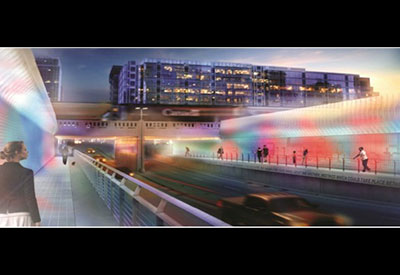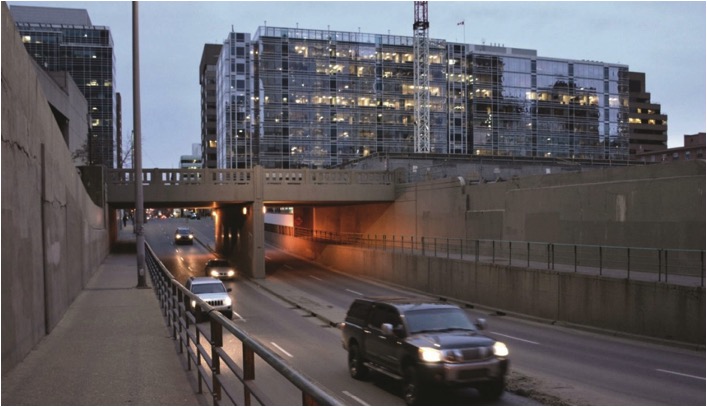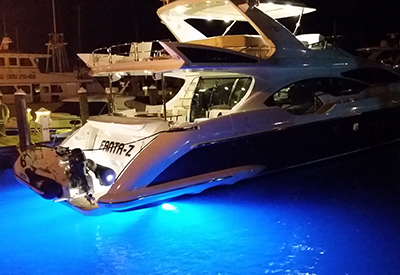Illumination Project to Animate Calgary Underpass

July 12, 2016
Calgary city councillors have approved a plan to illuminate a downtown underpass variously described as “scary” and “a space of fear.” The project will feature interactive lighting that will change as pedestrians approach, offering a creative solution to an unsafe eyesore, and is part of a larger $6.7 million revitalization of the underpass.
More than 8,000 pedestrians use the 4th Street SW underpass each weekday, but many report feeling uncomfortable or unsafe, particularly at night. The underpass connects the downtown core with the “Beltline,” a densely populated urban neighbourhood featuring apartments, condos and offices. The term Beltline comes from an early 20th-century streetcar route.
The 4th St. illumination project, created by Marc Boutin Architectural Collaborative and artist Krzysztof Wodiezko, was one of several design concepts considered by the city. According to the project proposal, “the introduction of animated light and colour, responding to the flow of people through the space, ensures the redesign remains evocative, varied and timeless… Integrated into the frame, the animated surface introduces a capacity for multiple readings and emergent experiences which amplify the city as a space for interaction. Activation of the wall surface is triggered by the presence of the body; in live time, animated light escorts visitors they move through the underpass. The capacity of sensors to detect movement and proximity enables visitors to deliberately augment the response of the light as they move through the space.”

The public art lighting strategy comprises three interrelated lighting components:
• screen lighting: responsive, high-resolution, pixel-based fixtures; hosts the lighting narrative (between bridges)
• veil lighting: responsive, low-resolution, linear-based fixtures; extends the public art lighting strategy as an urban gesture (through the veil)
• frame lighting: non-responsive, low-resolution, linear-based; conditions the experience of the pedestrian through light (under bridges)
Both the veil and the screen lighting will respond to the presence of people in the space.
A portion of the funding — $2.2 million — will come from two development-funded sources: the Beltline Community Investment Fund and the city’s public art capital deposit program.
Construction is scheduled to begin this summer and finish by the end of 2017.













